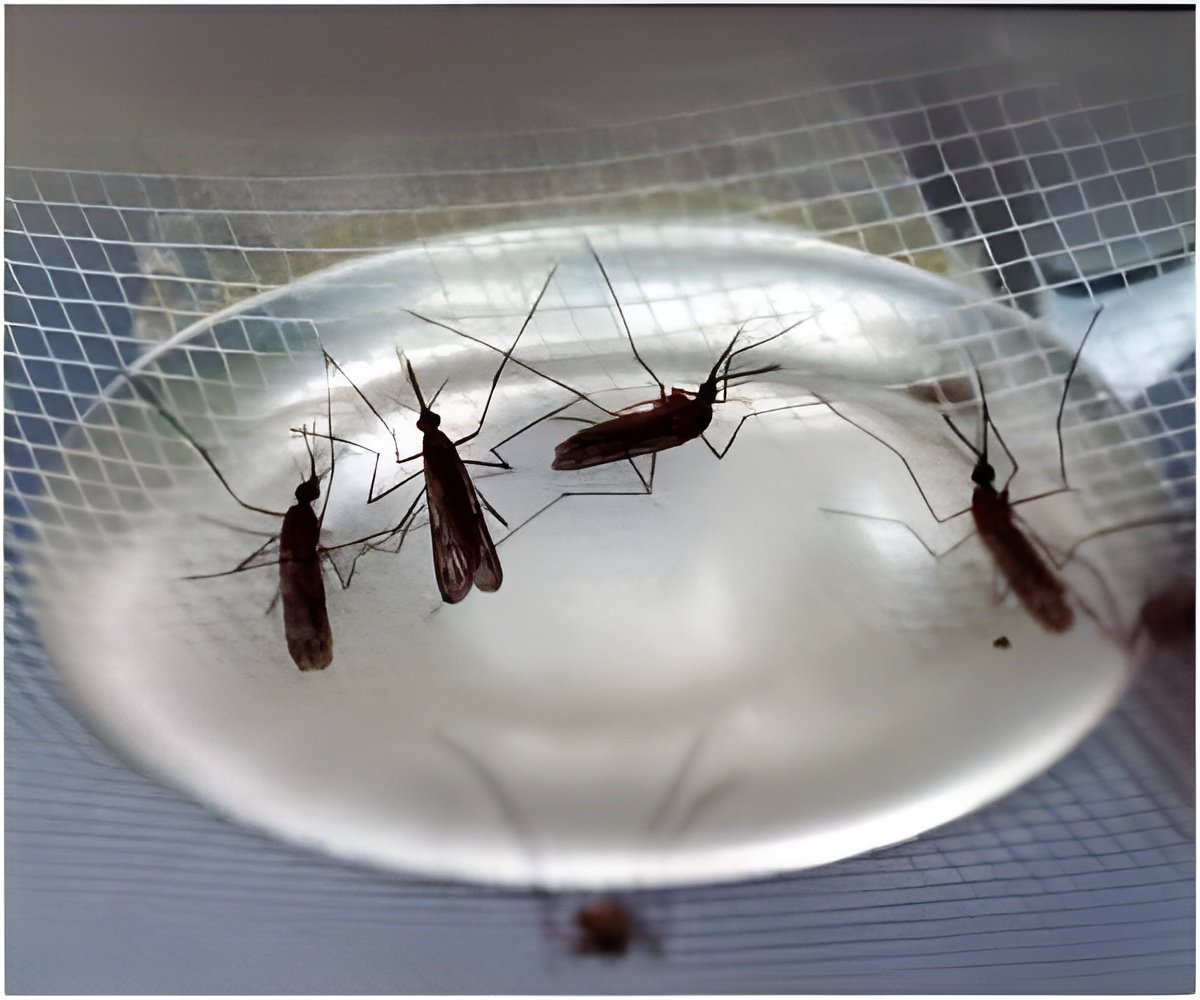There are signs of declining malaria deaths in Africa, which has raised hopes of eradicating the disease worldwide.

"This map helps us understand just how difficult it is going to be to eradicate malaria," said Peter Gething, PhD, who led the University of Oxford's Malaria Atlas Project (MAP) team that produced the study of vivax burden. "It shows that in substantial parts of the world, vivax malaria is endemic and transmission is significant. Unfortunately, the tools for fighting this type of malaria range from ineffective to non-existent."
Other studies being discussed at ASTMH—the world's largest gathering of public and private sector malaria scientists, clinicians and program professionals—and published in the December issue of the American Journal of Tropical Medicine and Hygiene, add to mounting evidence that vivax malaria may be killing people far more often than previously thought; confirm that existing treatments are inadequate and potentially toxic to millions; and shed light on the level of precaution that travelers should take when visiting these regions (see Backgrounder for further information).
While not as deadly as the Plasmodium falciparum malaria parasite that is predominant in Africa, vivax is more common throughout the world, with an estimated 2.85 billion people at risk of infection. And with its unique ability to relapse by hiding in the liver for months or even years, vivax is harder to detect and cure.
The MAP team produced an analysis last year depicting only where vivax is known to exist. Malaria experts immediately called for a map pinpointing where the disease is most prevalent, noting that such a tool is essential to mounting an effective fight against this form of malaria.
Hotspots for vivax malaria highlighted by MAP include substantial parts of India. Rates are high even in urban areas like Mumbai, where malaria—once thought of largely as a disease of rural areas—was previously uncommon. Papua New Guinea also has a high rate of infections and transmission, as do significant parts of Indonesia and Myanmar (including Yangon). In the Americas, the area of greatest concern is a large but sparsely populated portion of the Northern Amazon, most of which is in Brazil. But the hotspot also includes parts of Peru, Colombia and Venezuela. In Central America, almost all of Nicaragua is a hotspot for vivax malaria, as are parts of Honduras and Guatemala.
Advertisement
Stealth Disease Burden: "Large Reservoir" of Vivax Infections Hiding in the Liver
Advertisement
He noted that in areas where vivax is endemic, at any given time, there are many people carrying vivax parasites only in their liver, from which they periodically emerge to cause new infections in the blood stream. But, he said, this "large reservoir" of vivax is difficult to quantify with existing surveillance tools, chiefly because there is currently no simple test for detecting the liver parasites.
"One person with vivax actually can represent multiple malaria infections over many years in a single community and each time the parasite moves from the liver to the blood, it contributes anew to disease burden and transmission," Gething said.
The disease burden caused by vivax relapse, he said, is exacerbated by a lack of treatment options. Medicines such as the artemisinin combination therapies (ACTs) that are used to cure falciparum infections can help treat acute bloodstream vivax infections. But only one drug—primaquine—can clear vivax parasites from the liver and thus provide a long-term cure to this type of malaria.
However, in a cruel twist of evolution, a hereditary condition that may have evolved in response to malaria exposures can make the drug toxic, sometimes fatally so, to some people who live in vivax -endemicareas. At ASTMH, another team of researchers from the Malaria Atlas Project will present a map depicting the prevalence of the condition, known as G6PD deficiency, within malaria-endemic countries. Preliminary data indicate that this condition is relatively common in vivax-endemic Southeast Asia, though the highest rates are found in sub-Saharan Africa. The condition is also observed in the Americas, though at lower rates.
"We hope that by mapping the prevalence of G6PD deficiency we can provide evidence that will help contribute towards determining the risks and benefits of using primaquine, which is an important, yet potentially dangerous drug," said Rosalind Howes, the lead investigator on the project.
Even when primaquine is not toxic, the fact that it requires a 14-day regimen has made it impractical for areas where people have little or no access to even modest levels of health care—which is the majority of the malaria-endemic regions of the world.
Meanwhile, bednets and indoor spraying, which, coupled with ACTs, have helped reduce malaria deaths in Africa, appear to have had little impact on vivax. One reason is that the mosquitoes that transmit vivax typically bite outdoors, rather than indoors in the home. And RTS,S, the malaria vaccine candidate in Phase 3 trials that may soon be commercially available, does not target vivax.
This persistence of the vivax parasite in the face of a massive global campaign to eliminate malaria has prompted some malaria fighters to dub it "the last parasite standing."
Malaria experts say even though vivax still appears to be less deadly than falciparum, growing evidence of its link to fatalities warrant giving it a higher profile in the global malaria eradication campaign.
"It's time to step-up the fight against vivax malaria and stop looking at this form of the disease as relatively mild and tolerable," said Peter J. Hotez, MD, PhD, noted infectious disease expert and president of ASTMH. "We expect to emerge from this year's conference with a far better view of the state of vivax infections around the world and with new knowledge on treatment challenges that can guide a global strategy focused on eradicating all forms of malaria."
More Information On Vivax Presentations at Annual Meeting
Is Vivax Merely a Cruel Disease or a Common Killer? "…What data we do have worries me a great deal."
J. Kevin Baird, PhD, who works with the Eijkman-Oxford Clinical Research Unit in Jakarta, Indonesia, said identifying hotspots for vivax infections is crucial because it's becoming increasingly clear that vivax malaria is more of a threat than previously believed. Just a few years ago, he said, the prevailing view of vivax was that it routinely assaulted patients with soaring fevers and severe chills but was rarely fatal.
"We are beginning to suspect that Plasmodium vivax is killing people at far higher rates than anyone, including malariologists, thought even remotely possible," Baird said. "We still have very little data on this issue, but what data we do have worries me a great deal."
For example, Baird is presenting a new study at ASTMH that examined the outcome of patients admitted to a hospital in eastern Indonesia with a diagnosis of malaria. He and his colleagues at Jakarta's Eijkman Institute found vivax malaria to be the likely cause of both severe illness and deaths. Also, for all malaria patients classified as severely ill, the risk of death was the same regardless of whether they had vivax or falciparum malaria.
Another study to be presented at the conference, also conducted in Indonesia, reports similar findings. Researchers at Australia's Menzies School of Health Research investigated 65 deaths at a single hospital over a five-year-period that were linked to vivax malaria. They found that in this group of patients, vivax was more often a contributing factor to the deaths rather than the sole cause. But the scientists believe it is important to consider how infections with the vivax parasite may be an "important indirect cause of death" in patients already suffering from debilitating conditions such as malnutrition, sepsis and HIV, which are all too common in malaria-endemic regions.
Ric Price, a malaria researcher at Menzies, and a co-author of the study, said it is difficult to state with confidence how many people are dying of vivax because so many malaria patients also have other illnesses.
"It's often hard to say if patients are dying of vivax or with vivax," he said. "From our work, I believe the greatest threat from vivax malaria is the severe anemia, particularly in young children, that is caused by repeated episodes of the disease."
Seeking Alternatives for Primaquine"…We are excited by the results thus far."
Researchers agree that controlling vivax in areas where it remains endemic requires vastly improved interventions. Several researchers will present new studies at ASTMH on nascent efforts to find alternatives to primaquine; that is, drugs that can kill liver-stage parasites without the toxic side effects.
Larry Walker, PhD, of the University of Mississippi, who works with a consortium of university and government scientists seeking to develop new drugs that target vivax parasites that are dormant in the liver, said investigators will discuss new compounds that are in the same class as primaquine, but with the potential to be much safer.
"We have some interesting findings to discuss from pre-clinical studies that suggest we can make an improved drug," Walker said. "The real proof will ultimately come when these compounds can be tested in humans and we are probably several years away from that. But we are excited by the results thus far."
Researchers will also discuss efforts to develop a vaccine against vivax malaria. Major Jason Bennett, MD and Colonel Chris Ockenhouse, MD of the United States Department of Defense Walter Reed Army Institute of Research (WRAIR) in Silver Spring, Maryland will present the results of early-stage testing of a vivax vaccine candidate. While the trial results were less than hoped for, it stands as the first vivax vaccine candidate supported by the PATH Malaria Vaccine Initiative (MVI) that has advanced to a clinical trial. MVI is committed to supporting other vivax vaccine development efforts. However, there remain scientific hurdles to developing a vaccine against any malaria parasite (though a vaccine against falciparum malaria is now in a Phase 3 trial). Vaccine experts note that vivax poses a particular challenge because it has parasites that exist in the bloodstream and in a dormant phase in the liver.
Protecting Travelers from Vivax"Primaquine … has the added benefit of being the only drug to protect against malaria relapses."
One issue arising from the discussion of vivax prevalence and severity is the extent to which travelers should take precautions when visiting areas where vivax malaria is known to exist at any level.For example, in Latin America, where malaria transmission overall is believed to be declining, there are questions about whether travelers to the region should take anti-malaria drugs. A new article from scientists at the US Centers for Disease Control and Prevention (CDC) and WRAIR note that precautions may still be warranted for some parts of the region given new evidence regarding the potential severity of vivax infections—the predominant form of malaria in Latin America—and the potential for vivax infections to relapse.
Published in the December 2011 issue of the American Journal of Tropical Medicine and Hygiene, the article notes that the need for precautions depends heavily on where one is traveling. They point out, for example, that US residents traveling to Latin America are likely headed to coastal or urban areas, which usually have little or no malaria. (Though, this is not the case in Southeast Asia, where vivax is common in many urban areas.) The authors point out that this tendency likely explains why in 2008, Latin America accounted for only 6.2 percent of malaria cases in US travelers.
But for the growing number of travelers interested in more off-the-beaten path locations, such as remote, inland destinations in Latin America where malaria transmission is known to be common, more preventative measures are advised. For example, the researchers believe that a traveler to the Yucatan Peninsula of Mexico who plans to leave the beach only to see Mayan Ruins would not need anti-malaria medicines. But someone expecting to spend a couple of months in Chiapas, Mexico, where malaria is more common, should consider taking malaria prophylactic drugs.
The article concludes that travelers heading for regions where vivax transmission occurs should consider taking primaquine, as long as they are not pregnant and don't carry the genetic trait that can render the drug toxic. Primaquine can prevent malaria and if infection should occur, "it has the added benefit of being the only drug to protect against malaria relapses."
Source-Eurekalert











